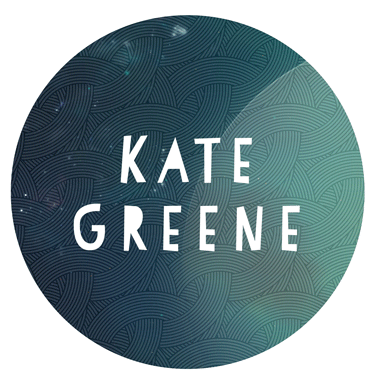Quantum dots are tiny nanocrystals that emit pure, bright light. For decades they’ve mainly been lab curiosities, but now QD Vision, an MIT spinoff, is using quantum dots to improve the color and efficiency of liquid-crystal displays.
I caught up with Seth Coe Sullivan, co-founder and CTO of QD Vision, at the Printed Electronics 2009 conference last week in San Jose. We talked about quantum dots in lighting (click here for the Q&A) and in LCDs. Below is an edited Q&A with Sullivan about quantum dots for LCD backlighting.
Kate Greene: Quantum dots will be in lighting products early next year. What’s next?
Seth Coe Sullivan: In 2011, we’ll be launching a display product. It’s still a quantum light optic, but it’ll be augmenting LED light in the backlight of displays. We’re basically doing spectral engineering, designing the spectrum of a light source to be perfect for the application. With solid-state lighting, we are focusing on the human eye’s perception of white. With displays we’re focused on creating red, green, and blue, but in particular red and green color channels in LCD to give a high color gamut, high power efficiency, while again reducing cost because we’re saving manufacturers LEDs.
KG: So where does the optic fit in an LCD?
SCS: If you look at an LCD today, you’ll see that they typically use white LEDs as a backlight. It’s a blue chip with yellow phosphor. So what happens is you get this nice broad yellow peak that fills out the spectrum and make it look roughly white. Then what you’re doing is putting it through a color filter because you want separate red and green channels. There’s a little red light in the yellow phosphor, and there’s a little bit of green light in yellow phosphor, so what LCD manufacturers are doing is using really spectrally broad color filters to let as much light through as possible. It hurts color quality, or color gamut in this case.
KG: Quantum dots replace filters?
SCS: No, they’re still going to use filters, we’re just going to take out the yellow phosphor, which is adding very little value but solving a need, and adding red and green quantum dots. It’s still going to be white light, but it’s going to tri-chromatic white that’s optimized for filters to maximize the throughput through the filters, as opposed to bi-chromatic light that’s getting chopped into tri-chromatic by the filters.
KG: If you did spectral analysis of your laptop backlight, it’d look blue and yellow?
SCS: Before the color filters, yeah.
KG: And then after the color filters it’s red, green, and blue?
SCS: Yeah. You’re taking this broad band and chopping it into pieces, and it’s extremely lossy. The white LEDs don’t put the photons where LCD really need it.
KG: How does this get integrated into manufacturing of an LCD.
SCS: Right now LCD makers buy white LEDs, integrate them into light bars, which is a bunch of LEDs on a strip, and those are coupled to the edge of a light guide plate which spreads the light. What we do is sell a quantum light optic that goes between the blue LEDs now and the light guide plate. So blue light gets converted into tri-chromatic white light and then gets couple into the light guide.
KG: They just have to buy blue LEDs instead of white LEDs with phosphor?
SCS: Yes. We aren’t selling the integrated LED. We’ll sell the optic.
KG: What sort of improvements can using a quantum light optic give to an LCD?
SCS: There’s a potential of 30 to 40 percent increase in power efficiency. Color gamut goes from about 80 percent of the standard gamut to over 100 percent. So all of a sudden your TV is as good as your CRT [cathode ray tube] was 10 years ago in terms of color. And there’s manufacturing cost savings to LCD makers, which is a big deal. Those guys operate at such thin margins, even giving them a few points is doubling their profitability potentially.
KG: Which LCD companies are you working with?
SCS: I can’t give any particular names, but we’re working with three of the five major LCD companies.
KG: It’s a clever to improve displays like this without re-engineer the entire device.
SCS: The display industry is completely motivated by cost, so it’s got to be really simple. What’s so compelling for us is that the materials we’re developing in solid state lighting—the packaging, the technology, the manufacturing processes—are going to be identical. For a small company chewing off very big markets—and both lighting and displays are $100 billion markets—it’s important that there’s a lot of synergy in terms of processes, materials, and manufacturing.
KG: Lighting and displays both use quantum dots that are activated by light, not electric current. What about full quantum-dot displays that are powered by electricity?
SCS: They’ll largely be on the military side for the Department of Defense, where they’re willing to perhaps pay a little more to solve a critical life-saving need. We’ll do that as opposed to competing right up against LCD. The OLED [organic light-emitting diode] guys are learning just how hard that is. How many decades have they been going at it? They’ve got a compelling technology, but cost, manufacturing scale, and building fabs it’s hard to compete with LCD.
This is the second of two Q&As with Sullivan about QD Vision products. The first Q&A focused on improving lighting with quantum dots. For my story in Technology Review about quantum dots for LCDs, go here.

Pingback: Improving the Look of LED Lighting
Pingback: Quantum Dot LCD HDTV | Improved Color, Reduced Energy Usage and Lower Prices
Pingback: Reporter’s Notebook: The Hunt for the Perfect Screen
Pingback: Reporter’s Notebook: The Hunt for the Perfect Screen | Hot Electronics Trends
Pingback: Improving the Look of LED Lighting | Hot Electronics Trends